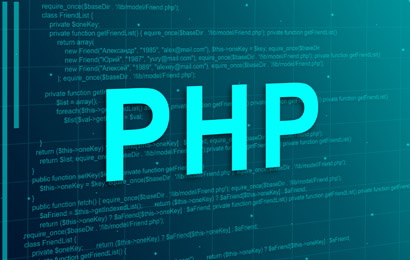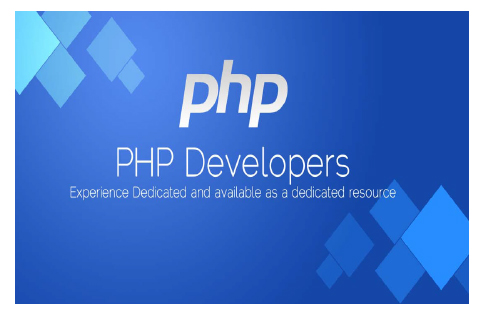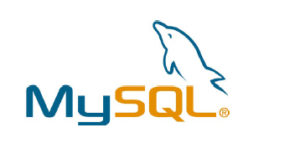- (5.0 Star)
PHP & MySQL
Certification Training
We provide Online Instructor And Classroom Instructor led Live virtual classroom by certified trainers/ industry professionals
- Get Up to 35% discount
About Course
PHP is a script language and interpreter that is freely available and used primarily on Linux Web servers. PHP, originally derived from Personal Home Page Tools, now stands for PHP: Hypertext Preprocessor, which the PHP FAQ describes as a “recursive acronym.”PHP is an alternative to Microsoft’s Active Server Page (ASP) technology. As with ASP, the PHP script is embedded within a Web page along with its HTML. Before the page is sent to a user that has requested it, the Web server calls PHP to interpret and perform the operations called for in the PHP script.
MySQL is an open source relational database management system (RDBMS) based on Structured Query Language (SQL). MySQL runs on virtually all platforms, including Linux, UNIX, and Windows. Although it can be used in a wide range of applications, MySQL is most often associated with web-based applications and online publishing and is an important component of an open source enterprise stack called LAMP
Key Features
You will get 100% job Assurance and life time e-placement support
classed taken by globally certified trainers
You will get 3 year Dedicated placement support
Courses are globally recognized & accredited

Course Type:
Certification Training
Live virtual classroom:
10,399/-
12,999/-
Regular classroom:
10,399/-
12,999/-
- Duration:
60 Hrs
- Enrolled:
89 Learners
- Eligibility:
Fresher 10th/10+2/Graduate with HTML/CSS Skill
- 5 Star:
15 Reviews
PHP & MySQL Course Curriculum
PHP is a script language and interpreter that is freely available and used primarily on Linux Web servers. PHP, originally derived from Personal Home Page Tools, now stands for PHP: Hypertext Preprocessor, which the PHP FAQ describes as a “recursive acronym.”PHP is an alternative to Microsoft’s Active Server Page (ASP) technology. As with ASP, the PHP script is embedded within a Web page along with its HTML. Before the page is sent to a user that has requested it, the Web server calls PHP to interpret and perform the operations called for in the PHP script.

Duration : 60 Hrs. Eligibility : Fresher 10th/10+2/Graduate with HTML/CSS Skill
OVERVIEW OF PHP
- Static vs. Dynamic Web Sites
- Dynamic Content from Databases
- Developing Dynamic Internet Applications
- Client-Side Scripting vs. Server-Side Scripting
- Overview of PHP Advantages and Capabilities
- Configuring php.ini
- PHP vs. ASP
CONDITIONAL CONSTRUCTS
True and False Expressions
- if, else and elseif
- switch/case Statement
- The ? (Ternary) Operator
- Timestamps
PHP FUNCTIONS
- Introduction to Functions
- Declaring Functions
- Scope
- PHP
- Passing Arguments to Functions
- Local and Global Scope
- Passing Arguments to Functions by Value and Reference
- Returning Values from a Function
- Using Include Files
- The Require Statement
- Recursion
- Dynamic Function Calls
- Predefined PHP Functions
ARRAYS IN PHP
- What are Arrays?
- Usage of Arrays in PHP
- Array Indexing
- Initializing Arrays
- Operating on Arrays
- Sorting Arrays
- One-Dimensional Arrays
- Multi-Dimensional Arrays
- Associative Arrays
- Array Functions
- Forms and Arrays in Web Applications
WORKING WITH DATA FILES IN PHP
- Searching File Contents With Regular Expressions
- Changing and Editing File Contents
- Splitting and Joining Information Inside Files
- String Functions
- Regular Expression Functions
- Reading, Writing and Deleting Files
- Handling File Permissions
- File Locking
- Reading Directory Contents
- Creating and Deleting Directories
CONFIGURING AND USING MYSQL
- MySQL as a Client/Server Solution
- Introduction to MySQL Capabilities as a Powerful RDBMS
- Installing and Configuring MySQL
- Connecting to MySQL
- PHP Functions Specific to MySQL
- Executing SQL Calls: SELECT, INSERT, FETCH, UPDATE, DELETE
- Using PHP MyAdmin to configure MySQL
MISCELLANEOUS PHP TASKS
- Error Logging
- Session Management and Maintaining State
- Web Application Architecture
- Using Environment Variables
- Changing Execution by Redirecting to Other URLs
- Embedding JavaScript within PHP
- Using the HTTP Protocols to Pass Data
- Showing Different Content to Different Browsers
- Getting IP Addresses from Visitors
BASIC SCRIPTING AND LOOPING CONSTRUCTS
- PHP Scripting Fundamentals
- Print Statement
- Code Blocks
- Primitive Data Types
- Defining Constants and Variables
- Looping Constructs: while, do… while, for, exit & break
PHP OPERATORS
- Logical Operators
- Relational Operators
- Bitwise Operators
- Other Operators
WORKING WITH DATABASES AND FORMS
- Configuring PHP For Database Support
- PHP’s Database APIs
- PHP’s SQL API
- MySQL vs. Access
- MySQL vs. SQL Server
- Database Drivers
- Database Driver Class Wrappers
- web solutions
ODBC
- Simple SQL Queries via PHP
- Tracking Visitors with Session IDs
- Populating Forms
- Retrieving Data from Forms
ENABLING E-COMMERCE
- Required Characteristics of an E-Commerce Site
- Authentication and Authorization
- Data Validation
- Building a Custom Shopping Cart
- Persisting Shopping Cart Data Over Multiple Pages
- Criteria for Evaluating Third Party Shopping Cart Solutions
- Open Source vs. Commercial Shopping Cart Solutions
- Order Processing via the Web
- Implementing Order System Security using SSL
- Using Mail Servers (SMTP and Sendmail) for Client Communication
- Configuring E-mail Output Parameters
USING COOKIES WITH PHP
- Purpose of Cookies
- Cookie Myths
- Setting Cookies
- Retrieving Cookies
- Expiring Cookies
- Deleting Cookies
- Storing Arrays in Cookies
USING SESSION WITH PHP
- What Session Control is?
- Understanding Basic Session Functionality
- Starting a Session
- Registering Session variables
- Using Session Variables
- Destroying the variables and Session
MySQL is an open source relational database management system (RDBMS) based on Structured Query Language (SQL). MySQL runs on virtually all platforms, including Linux, UNIX, and Windows. Although it can be used in a wide range of applications, MySQL is most often associated with web-based applications and online publishing and is an important component of an open source enterprise stack called LAMP. LAMP is a Web development platform that uses Linux as the operating system, Apache as the Web server, MySQL as the relational database management system and PHP as the object-oriented scripting language. (Sometimes Perl or Python is used instead of PHP.)
Duration : 20 Hrs. Eligibility : Fresher 10th/10+2/Graduate with HTML/CSS Skill
DATABASE
- Connecting to and disconnecting from the Server
- How to creating and delete a database?
- How can we choose and change database?
DATA TYPE, OPERATORS AND TABLE CREATION
- Data type
- MySQL Operators
- Creating table
MANIPULATING TABLE
- How to insert data?
How to delete data? - How to delete a table?
- How to rename a table?
- How add or delete or modify column in a table?
RETRIEVING & RESTRICTING DATA
- How can we fetch data from table?
- Operators
- Functions
- How can we impose condition when we are fetching data?
MYSQL FUNCTIONS
- Single row function
- Multiple row function
GROUPING
- How to use group by clause and why?
- How can we restrict data when we are using group by clause?
- Joining
- What is joining?
- What are the various types of joining? With some example.
SUBQUERY
- What is subquery?
- Why should we use subquery?
- How to use subquery?
CONSTRAINTS
- What is constraints and when we can apply constraints on table?
- What is NULL?
- What is primary key?
- What is unique key?
- What foreign key?
- How can we use these constraints?
INDEXING & ENGINE
- What is index?
- Merits and demerits of indexing on a table?
- How to create an index?
- What is engine?
- How can we change a table engine?
- Few points to, that may help us to choose the right type of engine for a table.
STORED PROCEDURE, TRIGGER AND PREPARED STATEMENT
- What prepared statement and how to use prepared statement?
- What stored procedure and how to use stored procedure?
- What trigger and how to use trigger?
QUERY OPTIMIZATION
- Why we need to optimize our query?
- How can we optimize our query?
- How can we optimize our database structure?

Sent Us a Message



